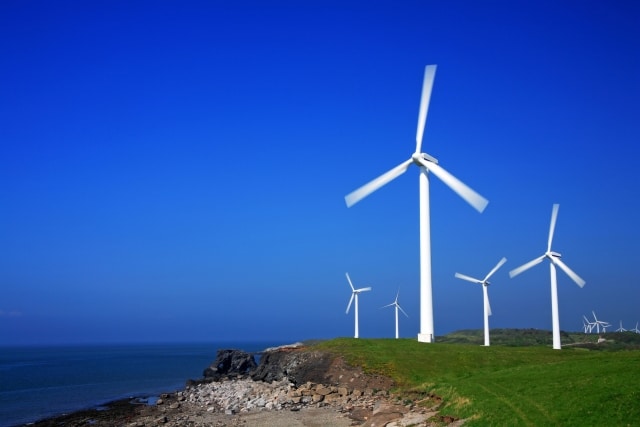California Governor Jerry Brown used the occasion of his fourth inaugural address to propose an ambitious new clean energy target for the state: 50% renewable energy by 2030.
“We are at a crossroads,” Brown said in announcing the proposal, according to Climate Progress. “The challenge is to build for the future, not steal from it, to live within our means and to keep California ever golden and creative.”
Already the leader in installed solar capacity and third when it comes to wind power, the Golden State had previously adopted a Renewable Portfolio Standard mandate to procure 33% of its electricity from renewable sources by 2020, a goal it was easily on pace to meet.
Environmentalists were quick to applaud Governor Brown’s 50% by 2030 proposal, which would give California the most ambitious renewable energy target of any US state, eclipsing Hawaii’s 40% by 2030 target.
But given the current growth rate of California’s renewable sector, even 50% by 2030 might not end up being that ambitious, according to Abigail Dillen, Vice President of Climate and Energy for Earthjustice.
“Indeed, projecting the current growth in renewables to the following decade is likely conservative given that the cost of solar and other renewable resources is expected to continue to decrease. So 50% renewable is achievable and should be seen as the bare minimum for 2030,” Dillen told DeSmog.
Governor Brown did not release any specifics or proposals on how the new renewable energy mandate would be met, leaving it to the relevant parties—the state’s community choice aggregators, electric service providers, and investor-owned utilities—to decide how to achieve the new standard.
If the proposal does indeed become the state Renewable Portfolio Standard’s new mandate, it would further expose just how weak the clean energy targets set forth by the EPA’s Clean Power Plan really are, as the plan calls for California to achieve just 21% renewables by 2030.
Increasingly, state and local leaders like Brown and Washington Governor Jay Inslee, who announced his proposal for a statewide cap-and-trade program less than a month ago, are stepping into the void of federal climate action.
While it does have higher than average solar potential, there is nothing unique to California that makes 50% renewables by 2030 more feasible there than elsewhere, Dillen says. Except, of course, the political will California has consistently mustered to lead the way on solutions to environmental crises like global warming.
“What is truly unique to California is its ability to transform the clean energy market,” Dillen told DeSmog. “It is a big state with a massive economy and the political will and innovative spirit to seriously address climate change. Californians see that climate change is real and a problem and are trying to develop solutions to address it.”
One example of California’s past environmental leadership in particular will also help the state to integrate ever-greater amounts of electricity from renewable sources into its energy mix in the future. Late in 2013, the state’s Public Utilities Commission ordered utility companies it regulates to install some form of energy storage system as a response to the booming solar industry. It was the first mandate of its kind, and, according to the New York Times, “it is turning the state’s power system upside down.”
In addition to calling for the new renewable energy mandate, Governor Brown’s proposal also included two other goals: to reduce the amount of oil used by cars and trucks by up to 50%, and to double the energy efficiency of existing buildings.
According to Climate Progress, Brown “envisions a variety of initiatives in achieving these goals, including expanded rooftop solar, micro-grids, battery storage and ‘the full integration of information technology and electrical distribution and millions of electric and low-carbon vehicles.’”
Some environmentalists reacted to Governor Brown’s proposal with heavily qualified optimism. Linda Capato of 350.org pointed out in a statement that, in the balance, even the most ambitious Renewable Portfolio Standard mandate in the country would not erase the harm done by Brown’s support of fracking in California.
“While this is a real step in the right direction, it still doesn’t address the reality that thousands of wells across our state are pouring hundreds of thousands of gallons of freshwater down a hole to release oil that worsens our collective addiction to fossil fuels,” Capato said. “The bottom line is simply this: California can’t claim to be a national leader in the fight against climate change while also unabashedly participating in extreme energy extraction methods that worsens it and endangers the health of our communities.”
Image Credit: Ian O’Hanlon / Shutterstock.com
Subscribe to our newsletter
Stay up to date with DeSmog news and alerts






